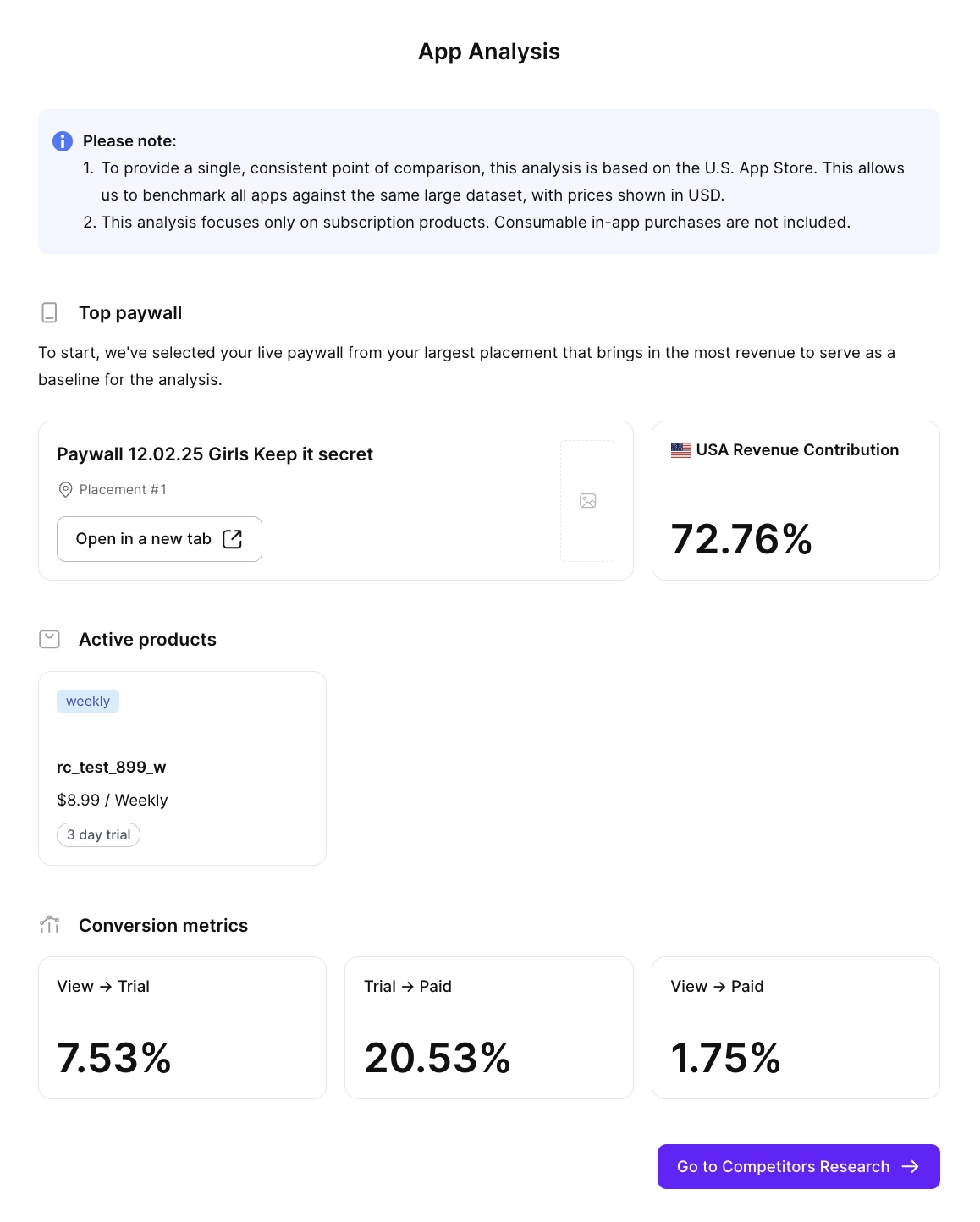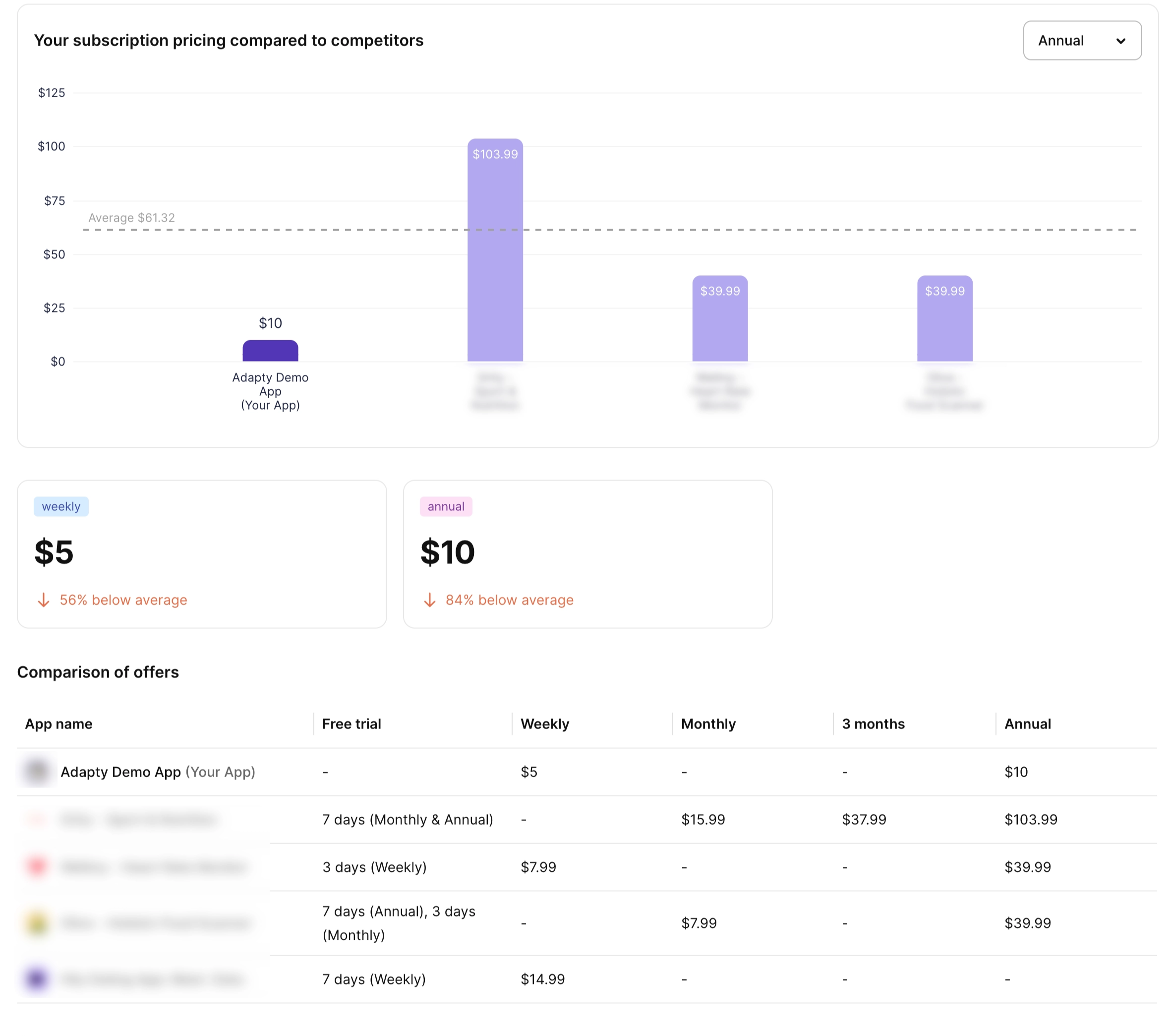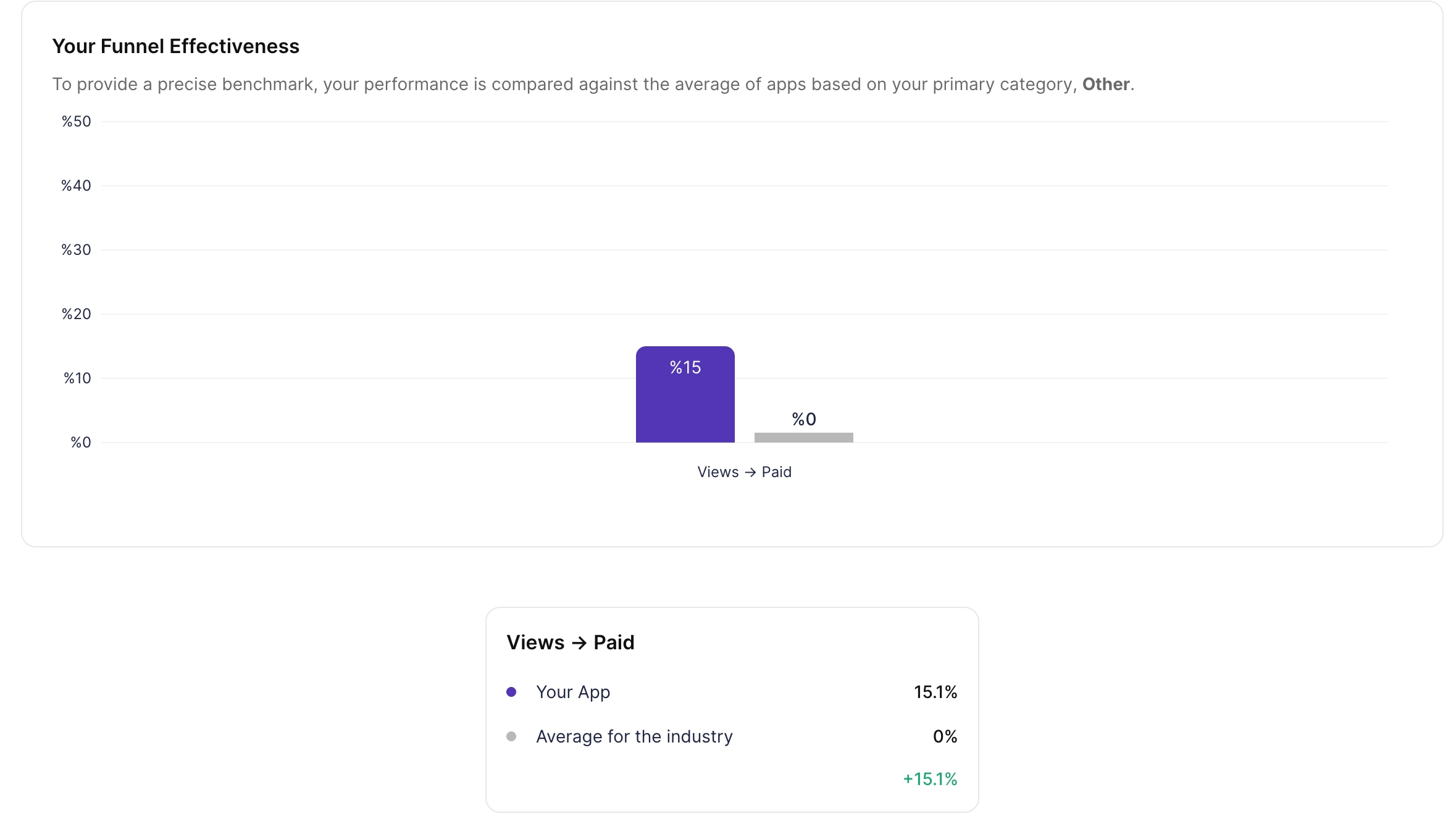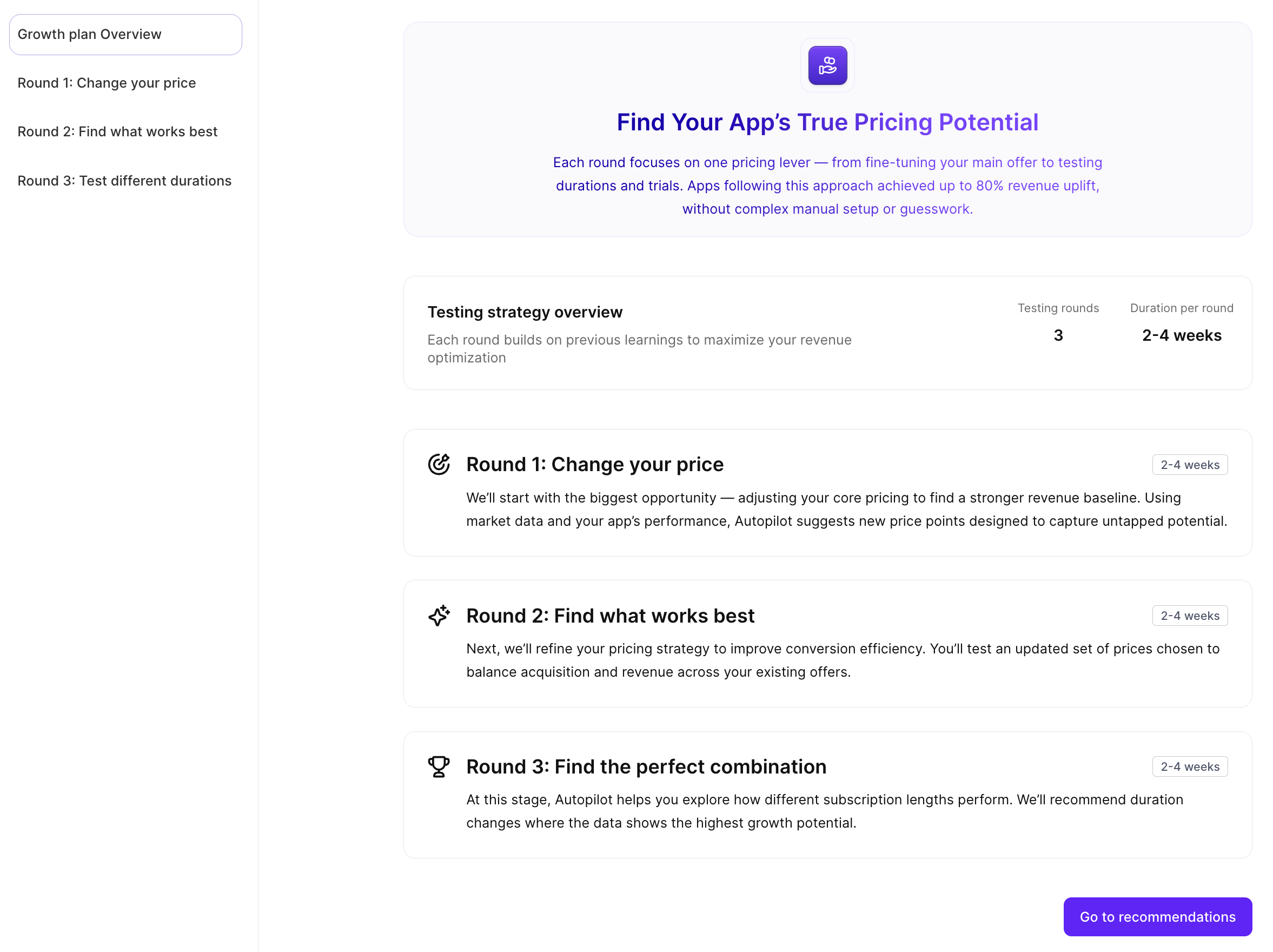Growth Autopilot: How it works
Growth Autopilot helps you figure out which experiments to run based on your actual performance data and how similar apps in your market are doing. Instead of guessing what might work, you get specific recommendations for tests that are more likely to improve your results.
This article offers a transparent look at how Autopilot thinks — what data it uses, how it evaluates opportunities, and why certain recommendations appear. The goal is to help you feel confident using it as part of your growth workflow.
What Autopilot actually does
Autopilot analyzes your app and finds the experiments that are most likely to increase your revenue. It looks at:
- Your current setup: pricing, trials, products, and how well they convert
- Market patterns: how similar apps structure their offers and what they charge
- Growth potential: which changes are most likely to make a difference
Autopilot prioritizes tests based on their potential impact and turns them into experiments you can launch right away. You get a focused plan without having to research competitors or guess what to test next.
The data behind Autopilot
Each recommendation is built from three main data sources that work together.
Your app's own data
Autopilot looks at how your app performs today:
- Conversion metrics across your paywalls
- Pricing and product structure
This gives Autopilot a baseline to work from before suggesting any changes.
We don't use your app's performance data to train recommendations for other apps. Your data stays private.

Competitor data
Autopilot compares your setup with similar apps in your market using public information like pricing, subscription structures, and common patterns in your category. This is based on third-party and public data, not private metrics from other Adapty clients.
This way, you're testing strategies that already work for apps like yours, not just random ideas. When you see the analysis, you can compare your benchmarks and competitor prices side by side. If similar apps are doing better with different pricing or structure, that's a good signal that the same approach could work for you too.
Autopilot selects relevant competitors automatically based on what you can realistically compete with. We generally recommend sticking with these suggestions rather than adding apps that are too far ahead or too far behind. If your app falls into several categories, you might want to adjust the list to focus on the most relevant market segment.

Industry benchmarks
Autopilot also uses category-level data to show how you compare to the industry average. This data is anonymized and aggregated, not tied to specific apps.
For example, your conversion funnel might be compared against the average for apps in your category. This helps you see if you're underperforming, doing about average, or already ahead of the curve.

How Autopilot decides what to recommend
Autopilot creates a sequence of experiments to improve your paywall step by step. Instead of testing everything at once, it focuses on one change at a time so you can see what actually works.
Here's how it works:
-
Find the biggest opportunity
Autopilot reviews your pricing, products, and funnel performance, then compares them with industry patterns and similar apps. It looks for where you have the most room to improve, whether that's adjusting your price, adding a trial, or changing your offer structure.
-
Pick the next experiment
Each recommendation is part of a testing sequence. You might test new products, price points, trial configurations, or design changes, depending on what's likely to have the biggest impact.
-
Run winner vs. challenger rounds
After each experiment, the winner becomes your new baseline. The next recommendation builds on that result with a new challenger. Each round gets you closer to the best setup for your app.
-
Keep it practical
Autopilot only suggests tests you can launch with your existing products and setup, or with small changes like creating a new product or adjusting a price. The goal is to keep testing fast and manageable.
-
Show you the reasoning
For each recommendation, Autopilot provides a clear hypothesis that explains exactly why this test is worth running. You'll see how your current metrics compare to competitors and industry averages, what the opportunity is, and which key metrics we expect to improve.
This turns experimentation into a repeatable process where each test teaches you something and moves you toward a more effective paywall.

What happens after you complete the experiments
Once you finish all the recommended experiments and see an increase in revenue, your work isn't done. After some time with your new setup, you can rerun the analysis and start a fresh round of experiments. You might even choose to compete with more advanced competitors now that you've optimized your baseline. This iterative approach helps you keep maximizing your revenue as your app grows and the market evolves.
More features are coming! Expect even smarter suggestions, an idea library to explore proven strategies, and the ability to launch experiments in one click. Autopilot will keep getting better at helping you grow.